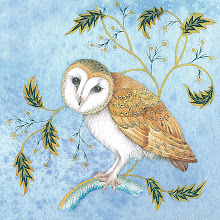
This is my first tutorial so you are my guinea pigs, wish me luck!
I have designed two bookplates, one is a frog design and the other is a fairy; I call her "Bouquet Fairy" as she is holding a bouquet of wild flowers. The frog design was first offered to a website called My Home Library You can still finds lots of designs there. the version that I am offering you here today has slightly different wording.
To get your Free Frog Bookplate click here-

Your PDF should be ready to print; I like to use black ink on a good quality paper such as Conqueror, which comes in a range of colours although traditionally bookplates tended to be printed on white paper. Try experimenting on different papers to see which one you like the best, I prefer a cream paper but it is up to you.
Set your printer to print top quality, follow your printer’s instructions to ensure a good result.

The bookplates will need to be trimmed to size, allow a little space between the border and the cutting edge, I like to give about 5mm clearance all round but you can trim right up to the border edge, it is up to you. I use a craft knife and a metal ruler on a cutting mat but you can use scissors if you are careful.

When you have your plates cut to size you will need to glue them into your book. This procedure needs to be done with some care and preparation to give the best results. It is advisable to practice on an inexpensive book first. I do not always glue bookplates into all my books especially if the book is very valuable; instead I place it inside the front cover.
You will need a small brush for gluing, adhesive (I like to use PVA mixed with a little water to a creamy consistency). You will also need some waste paper and a small clean cloth.
Firstly, take your book and decide where you want to stick the plate. I find it useful to lightly mark the corner position with a pencil. You can use a ruler and a setsquare to help get an even space each side. You can erase the pencil mark later.

When you are ready, take the bookplate and place it face down onto a clean piece of scrap paper. Take your brush and carefully glue the back of the plate making sure that you apply a thin but even coat. Start in the middle and work your way out to the edges, you will need to hold the plate down with one finger but try not to get too much glue onto your fingers! Discard the waste paper, take your bookplate holding it carefully at the corners and gently position it into the book.
You can use your clean cloth to gently press your plate into position and wipe away any surplus that may have crept out from beneath. You will then need to leave it to dry before closing the book. This is important; you do not want to stick your pages together!
Remember, practice makes perfect so try an inexpensive paperback first.
The fairy bookplate pdf is available here in my shop
Good luck, I hope you enjoy your bookplates.








